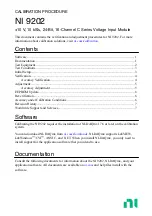
V1.22
Owners Manual SP20-Linex™
- 18 -
5.4
Power amplifier requirements
When selecting a power amplifier, don‘t go for “just enough power”! Ample although not
excessive headroom is preferable. The recommended amplifier power presented for a given
Linex system is a good indicator of the size of the amplifier, which will safely drive the
loudspeaker system to full output under most conditions. A smaller amplifier may seem to
provide an extra safety-measure against loudspeaker failure. However an underpowered
loudspeaker will most probably fail sooner than the same loudspeaker powered properly with
the same voltage.
Recommended amplifier power
Sound Projects recommends a
minimum
amplifier peak voltage capacity of double the RMS
voltage at full power in order to avoid clipping the signal. For this reason maximum
Recommended Power Levels per Transducer (RPL/T) may exceed the AES power rating of
individual drivers.
Important note on amplifier power
The listed amplifier power does not always correspond to the best amplifier sizes for
optimum loudspeaker reliability and/or performance. They correspond with what
generally will be a safe amplifier size given the connection diagram in paragraph 2.1.
However in some applications they can be over or underpowered. Proper amplifier
selection requires a considered analysis for the particular application.
Recommended amplifier power table for SP20-Linex
1 Cabinet
2 Cabinets
3 Cabinets
4 Cabinets
3
p4/HF
300 W
16 Ω 600 W
8 Ω 900 W
5,3 Ω
1200 W
4 Ω
p3/MF
600 W
8 Ω
1200 W
4 Ω 1800 W
2,7 Ω
2400 W
2 Ω
p2/LF1
1200 W
8 Ω
2400 W
4 Ω 3600 W
2,7 Ω
4800 W
2 Ω
p1/LF2
1200 W
8 Ω
2400 W
4 Ω 3600 W
2,7 Ω
4800 W
2 Ω
table 5.4 Recommended Amplifier power
Two-Ohm loads and amplifier performance
Most professional amplifiers are capable of running two-ohm loads for extended periods of time
and thus only two amplifiers can power up to four LINEX cabinets. Powering low- and mid
bands @ 2 ohm load is common practice and permissible as long as the available power and
other specs are in excess of the system requirements. However, capable is not necessarily the
same as recommendable. Hence the first obvious question is therefore: will a particular
amplifier handle 2-ohm operation with acceptable distortion specifications?
The next question is: how much are you willing to sacrifice of the superb transient-response of
your LINEX system? The unintended but unavoidable consequence of lowering the loudspeaker
impedance is a decrease in damping factor. The damping factor describes the control a power
amplifier exerts over the loudspeaker motion.
3
Not recommended, only with 2 Ohm enabled amplifiers.
















































